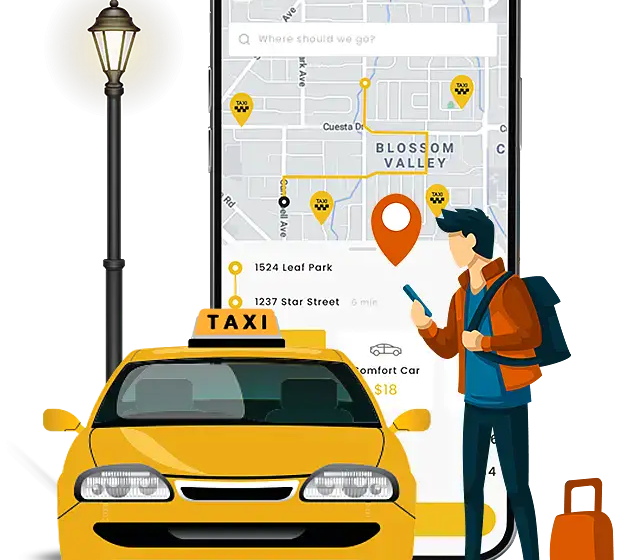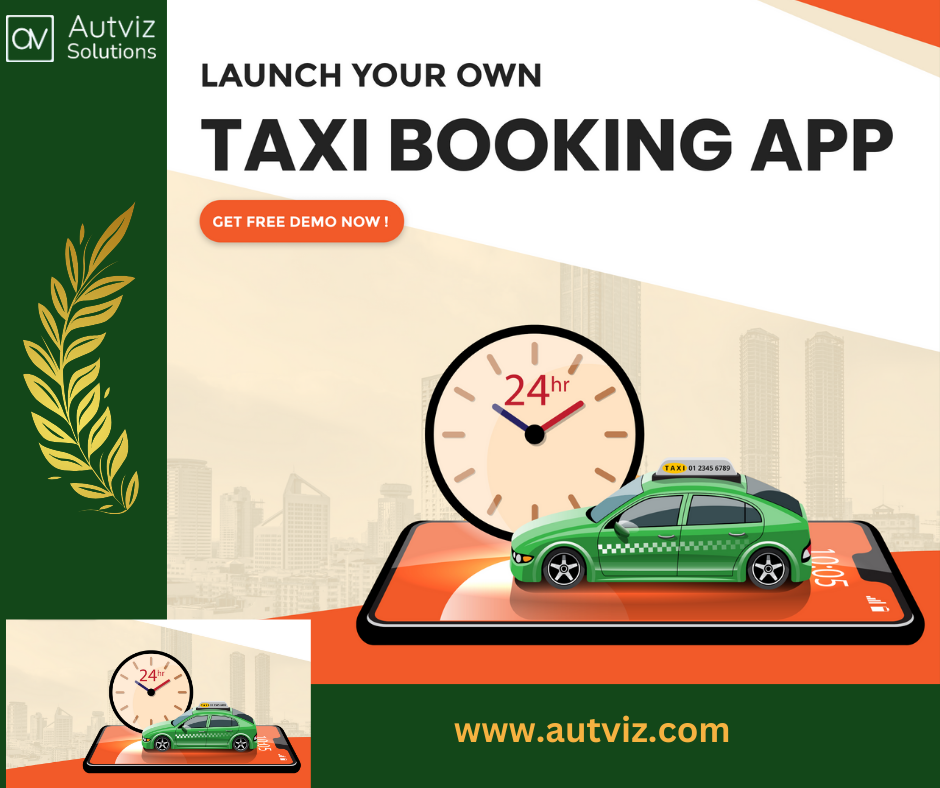What Are the Steps to Take Your Taxi App from Concept to Launch?

In the modern age, the introduction of mobile applications has transformed various industries, and the taxi service sector is no exception. Taxi apps like Uber, Lyft, and Ola have revolutionized the traditional model, providing unmatched convenience to passengers and opening up new business prospects for entrepreneurs. If you are considering creating a taxi app, this in-depth tutorial will take you through all the necessary processes to take your taxi app from concept to launch.
Step 1: Conduct Market Research
Before diving into app development, it is crucial to conduct thorough market research. This step helps you understand the market landscape, identify your target audience, and analyze your competitors.
1. Identify Market Demand: Analyze current market trends to understand the demand for taxi services in your target region. Look into factors such as population density, urbanization rate, and existing transportation infrastructure.
2. Study Competitors: Examine the strengths and weaknesses of existing taxi apps. Identify gaps in the market that your app can fill. This could be in terms of features, pricing, user experience, or geographic coverage.
3. Understand User Needs: Conduct surveys, interviews, and focus groups to gather insights into what users want from a taxi app. Pay attention to pain points such as booking ease, payment options, safety features, and customer support.
Step 2: Define Your Unique Selling Proposition (USP)
Based on your market research, define your app’s unique selling proposition (USP). Your USP is what sets your app apart from competitors and attracts users. It could be an innovative feature, superior service quality, or a unique pricing model.
1. Innovative Features: Consider integrating features that are not commonly found in other taxi apps. This could include advanced safety features, real-time ride sharing, loyalty programs, or integration with other services like food delivery.
2. Service Quality: Emphasize the quality of service you aim to provide. This could be through better-trained drivers, more comfortable vehicles, or superior customer support.
3. Competitive Pricing: Develop a pricing strategy that offers better value for money. This could include dynamic pricing models, subscription plans, or discounts for frequent users.
Step 3: Develop a Business Plan
A well-structured business plan is essential for outlining your strategy and securing funding. Your business plan should cover the following elements:
1. Executive Summary: Provide a concise overview of your business, including your vision, mission, and objectives.
2. Market Analysis: Detail your market research findings, including market size, growth potential, and competitive landscape.
3. Business Model: Describe your business model, including revenue streams (e.g., ride commissions, surge pricing, premium services).
4. Marketing Strategy: Outline your plans for attracting and retaining customers. This could include digital marketing, partnerships, referral programs, and promotional campaigns.
5. Operational Plan: Describe how you will run the business, including driver recruitment and training, vehicle acquisition and maintenance, and customer support.
6. Financial Projections: Provide detailed financial projections, including startup costs, revenue forecasts, and break-even analysis.
Step 4: Choose the Right Technology Stack
Selecting the appropriate technology stack is crucial for building a robust and scalable taxi app. Your technology choices will impact the app’s performance, security, and user experience.
1. Frontend Development: Choose a frontend framework that supports a smooth and responsive user interface. Popular choices include React Native, Flutter, and Swift (for iOS) or Kotlin (for Android).
2. Backend Development: Your backend should handle data processing, storage, and communication with the front end. Common backend technologies include Node.js, Ruby on Rails, and Django.
3. Database Management: Use a reliable database to store user and ride data. Options include MySQL, PostgreSQL, and MongoDB.
4. APIs and Integrations: Integrate third-party APIs for features like geolocation (Google Maps API), payment processing (Stripe, PayPal), and push notifications (Firebase).
5. Cloud Services: Utilize cloud services like AWS, Google Cloud, or Azure for scalable server infrastructure and storage solutions.
Step 5: Design a User-Friendly Interface
The success of your taxi app largely depends on its user interface (UI) and user experience (UX). A well-designed app should be intuitive, visually appealing, and easy to navigate.
1. Wireframing and Prototyping: Start with wireframes to map out the app’s layout and user flow. Use prototyping tools like Figma or Sketch to create interactive prototypes.
2. User-Centered Design: Focus on designing an interface that meets the needs of your users. Ensure that booking a ride, tracking the driver, and making payments are simple processes.
3. Consistent Branding: Maintain consistent branding throughout the app. Use your brand colors, logo, and typography to create a cohesive look and feel.
4. Accessibility: Ensure that your app is accessible to all users, including those with disabilities. Follow accessibility guidelines to make your app inclusive.
Step 6: Develop the App
With your design and technology stack in place, it’s time to start developing the app. This process involves several stages, including coding, testing, and debugging.
1. Agile Development: Use an agile development methodology to break the development process into manageable sprints. This allows for continuous feedback and iterative improvements.
2. Backend Development: Build the server-side components, including user authentication, ride-matching algorithms, and payment processing.
3. Frontend Development: Develop the user-facing parts of the app, ensuring that the UI is responsive and functional across different devices and screen sizes.
4. Integration: Integrate all third-party services and APIs required for your app to function seamlessly.
Step 7: Test Thoroughly
Thorough testing is critical to ensure that your app is free from bugs and provides a smooth user experience.
1. Unit Testing: Test individual components or functions of the app to ensure they work correctly.
2. Integration Testing: Test the interactions between different components and third-party services.
3. User Acceptance Testing (UAT): Involve real users in testing the app to gather feedback and identify any usability issues.
4. Performance Testing: Ensure that the app performs well under different conditions, including high user loads and varying network speeds.
5. Security Testing: Conduct security tests to identify vulnerabilities and ensure that user data is protected.
Step 8: Plan Your Launch Strategy
A successful launch requires a well-thought-out strategy to attract users and generate buzz.
1. Pre-Launch Marketing: Build anticipation through social media campaigns, teaser videos, and press releases. Engage with potential users by sharing behind-the-scenes content and app features.
2. Beta Launch: Conduct a beta launch to a limited audience to gather feedback and make necessary improvements. This can help you identify any last-minute issues before the official launch.
3. Partnerships: Partner with local businesses, events, or influencers to promote your app. This can help you reach a wider audience and gain initial traction.
4. App Store Optimization (ASO): Optimize your app’s listing on the App Store and Google Play Store. Use relevant keywords, compelling descriptions, and attractive screenshots to improve visibility and downloads.
Step 9: Launch the App
Finally, it’s time to launch your app to the public. Ensure that all technical aspects are in place, including server capacity and customer support.
1. Official Release: Announce the official launch date and make the app available for download. Coordinate with app stores to ensure a smooth release process.
2. Monitor Performance: Keep a close eye on the app’s performance, user reviews, and feedback. Address any issues promptly to maintain a positive user experience.
3. Marketing Push: Continue your marketing efforts post-launch to attract new users. Use social media ads, email marketing, and referral programs to drive downloads.
Step 10: Gather Feedback and Iterate
Post-launch, it’s crucial to gather user feedback and continually improve your app.
1. User Reviews and Ratings: Monitor app store reviews and ratings to understand user sentiment. Respond to feedback and address any issues raised by users.
2. Analytics: Use analytics tools to track user behavior, identify usage patterns, and pinpoint areas for improvement. Metrics to monitor include user retention, session length, and conversion rates.
3. Regular Updates: Release regular updates to fix bugs, improve performance, and add new features. Keep users informed about updates and new features through in-app notifications and email newsletters.
4. Customer Support: Provide excellent customer support to address user queries and issues. Offer multiple support channels, including in-app chat, email, and phone support.
Conclusion
Developing a taxi app from conception to launch requires careful preparation, calculated action, and constant improvement. Each step in taxi app development, from conducting market research to identifying your USP, creating a strong technological stack, and creating an intuitive user experience, builds the foundation for success. Thorough testing and a carefully thought-out launch strategy guarantee a seamless entry into the market. Post-launch, continuous development based on market trends and customer feedback is essential. By concentrating on providing outstanding value and retaining flexibility, you can develop a successful taxi app that meets and surpasses user expectations, ensuring long-term growth and success.




